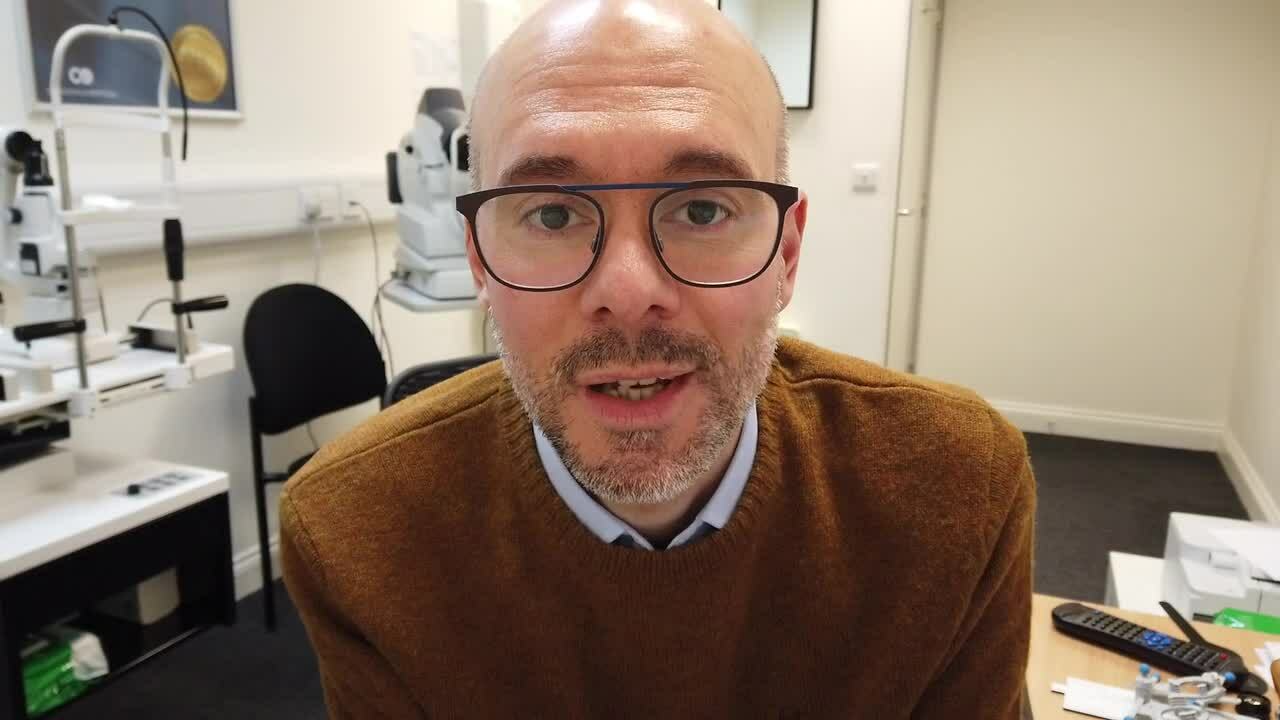
Everyone has heard the term, but what is it? So shortsightedness, it’s technical name is myopia. So if you're myopic, you are shortsighted. And people often get confused with the difference between shortsighted and long-sighted.
So shortsightedness means that you can only see things at a short distance. Okay. So you are sighted, you can see at a short distance, so things that are close to you. The Americans call it nearsighted, which explains it a bit as well. You can only see things that are near. You are sighted at a near point. Okay. So that's what shortsightedness is. Now what that actually means is you can't see the far distance very well. Okay, so your far distance is blurred, but your close vision is clear.
Now, depending on how shortsighted you are is to where the clarity is. So if someone's very, very shortsighted, they will be able to see things very, very close without glasses on. If someone's just moderately shortsighted, they'll be able to see things a little bit further back than that, without glasses on. So that is “shortsightedness”.
Now the reason for that is quite simple, really. The light going into your eye is falling in front of the retina, so it's falling short of the retina. It's not getting to the retina, to get the clear focus on the retina. Now that could be because the eyeball is slightly too long or it could be that the front of the eye is too curved and bends the light too much and therefore focuses it in front of the retina. It doesn't get to the bit where it needs to be to give you a sharp, clear image.
That's also the reason why you can see things that are very close to you and this surprises a lot of people who are shortsighted. But if you're looking at something very close, you technically don't need to focus your eye, because the natural power of your eye will see things from this close point. So when you're shortsighted and you're reading things without glasses on, you're not actually focusing. You're not using the focusing mechanism of your eye, because your eye is naturally seeing things from that distance, from that point in front of you. So that explains a little bit more about shortsight.
To correct shortsightedness, we need to give you a minus lens, a negative lens, because it pushes the light outwards. So when the light hits the front of your eye, if it's too curved, it's going to bend it enough to get it to the back, because the light coming at you is diverging. It's moving outwards, rather than coming straight at you, which would bend it too much and fall in front of the retina.
So you'd need to see some sort of ray diagrams to understand all that in more detail (fig1). But, basically, the negative lens to correct shortsightedness is thinner in the middle and thicker at the edge of the lens. So if you're very, very shortsighted, a lens made from a thinner and lighter material would be useful, because you lose that heavy edge thickness.
So hopefully that explains and gives you a bit more understanding about shortsightedness, what it is and, not to be confused with the opposite, which is long-sightedness. Just to recap, shortsighted people, can't see the distance, they are sighted for things that are a short distance away, a close distance to them.
CUSTOMER REVIEWS
Our number of 5 star reviews is always growing. Here is what some of our current clients have to say
We have used Village Optician for a few years now. Having tried the usual High St opticians previously, we find them very professional, friendly, nothing is too much trouble, and they take time to explain any issues. It is refreshing not to be rushed and feel pressured into buying new spectacles at every visit.
The Hudspeths
I visited the Village opticians recently and today collected my new glasses. From the first meeting with the staff to collecting my glasses what a fantastic experience everyone has been so friendly and helpful. I explained I had a problem getting a frame to fit correctly, they told me It wouldn’t be a problem they could sort it. This is the first time I have gone to collect glasses and have them fit first time also the lens they recommended are great. I saw the reviews on line before I visited this opticians and can say I agree with their comments. Your eyesight is precious and this opticians go the extra mile to make sure you receive the best treatment.
Mrs Margaret P
I have used The Village Optician for the first time and have been very impressed with the service I have received. I felt the eye test was very thorough and choosing new frames was easy as their range is extensive. Very professional and friendly service from start to finish. I highly recommend this opticians.
Angela M